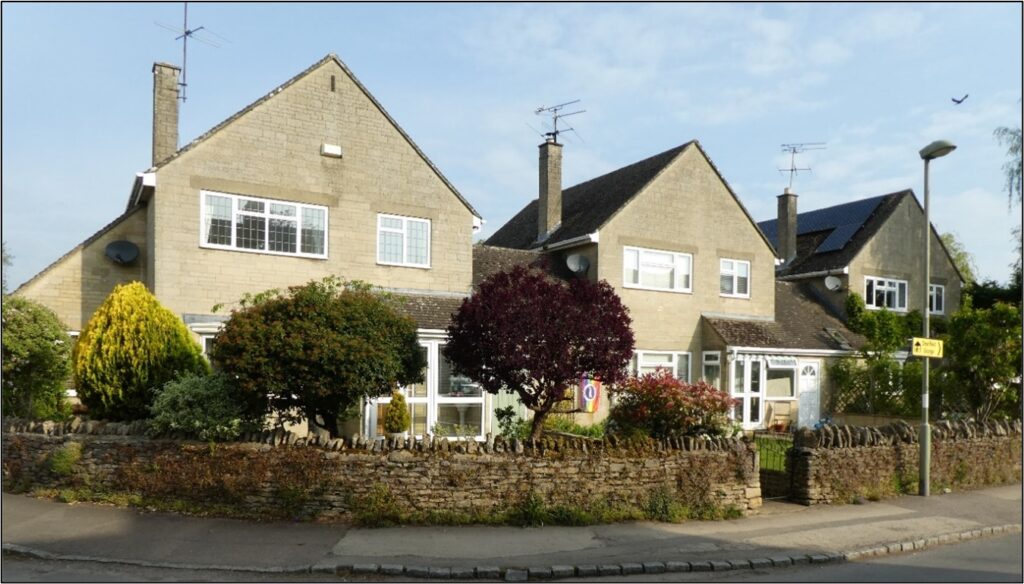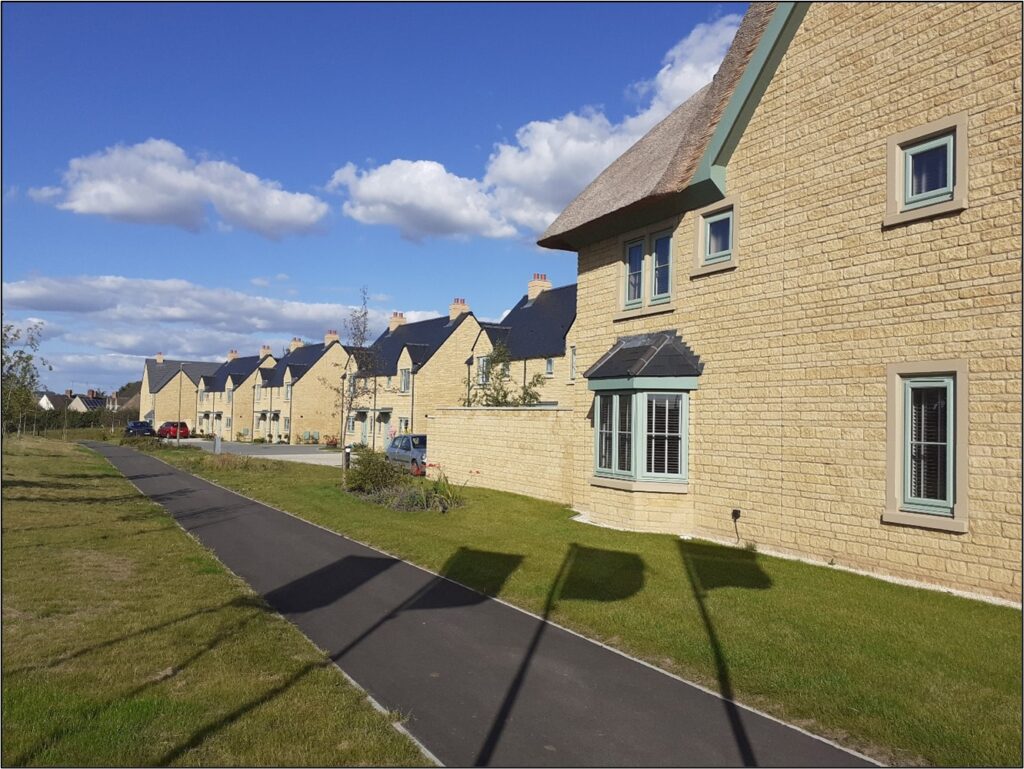Whilst the core of the High Street is predominantly 19th Century and earlier, the 20th Century and first decades of the 21st Century has seen massive change in the Street.
Gas lamps came and went, telegraph poles arrived firstly to bring electricity to the street in the 1930s, and later to serve telephone wires. Whilst street water taps were available from the later 19th Century being fed from streams above Upper Milton, pumped water mains did not arrive until after the second World War, along with underground sewers and rainwater conduits.
Outdoor WCs have been demolished and indoor WCs installed. The car arrived in increasing numbers after the Second World War, and though the street was not built with provision for the car, homeowners have squeezed garages onto their plots where possible or converted garden frontages to hard standing to accommodate the voracious demands of the internal combustion engine, not without some loss of character to the setting of houses (figure 20). The car has also brought double yellow lines to the street scene.

The most significant addition to the street in terms of housing as already mentioned, has been the replacement of Poplar Farm with an estate of houses of the 1970s (figure 32). Otherwise there have been a few infill properties squeezed into some remaining gaps into the street frontage. The first bungalow appeared in 1936 at number 4, and more were added in the 1960s and examples appear at number 7, and number 60. There is a short terrace of one-bedroom bungalows at numbers 96, 98 and 100 from the same period and another three pairs of more substantial semi-detached bungalows follow on in the 1980s at 102-112.
There have also been important demographic changes during the 20th Century. At the beginning of the century it would have been true to say that most people living in the village were born here or within the local area and worked in the local area. Now most inhabitants were not born in the area and few work locally.
The other significant recent addition to the High Street, though it is to the fringe, is the development of 62 houses now known as St Jude’s Meadow. The estate includes 50% of social housing the other 50% being market-rate homes for purchase. The build began in 2019 and is nearing completion. Its location does not disturb the integrity of the core of the High Street, as it is well set back from the street line, and the dry-stone wall and hedgerow that borders the street has been retained.
One curiosity of this development is a large property near the entrance to the estate which features thatch. A roofing material that would have once been quite common within the High Street, and more widely, prior to the mid-20th Century. The estate also refers to another aspect of the Village’s history in borrowing its name from the parish church of SS Simon and Jude on Church Street, built in 1853.

(The author is working on a larger history of the buildings of Milton-under-Wychwood and Upper Milton and if you have any historical background to your own house, please contact the Wychwoods Local History Society via our website: here).
Introduction | Before the 19th Century | The 19th Century | Shops and Pubs | Religion | 20th and 21st Centuries | Article Intro

